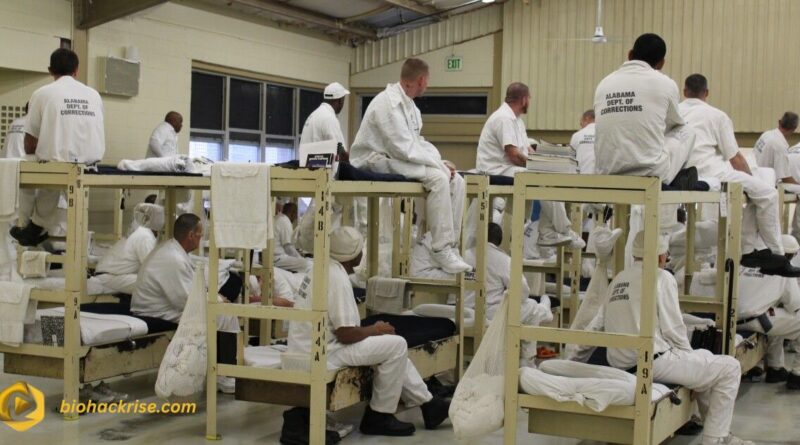Armor Correctional Health Services Lawsuit
The Armor Correctional Health Services lawsuit refers to a series of legal cases filed against Armor Correctional Health Services, a private company contracted to provide medical care in U.S. jails and prisons. These lawsuits allege widespread medical negligence, wrongful deaths and violations of inmates’ constitutional rights to adequate healthcare.
Plaintiffs claim that the company failed to properly diagnose, monitor, and treat inmates, leading to preventable harm and fatalities. Over the years, Armor faced multiple multimillion-dollar settlements and even criminal charges in some states. The lawsuits highlight systemic issues within privatized correctional healthcare systems. They also raise questions about accountability, ethics, and the balance between cost-cutting and patient care. Ultimately, these legal actions reveal deep flaws in the nation’s approach to inmate healthcare management.
Behind bars, healthcare should protect life, not end it. The Armor Correctional Health Services lawsuit exposes shocking stories of neglect, indifference, and tragedy within America’s jails. From dehydration deaths to ignored medical emergencies, these cases reveal what happens when profit overshadows compassion. It’s more than a lawsuit; it’s a wake-up call for justice and humanity behind locked doors.
Armor Correctional Health Services was once one of the largest private healthcare providers for correctional facilities across the United States. Over time, it became entangled in numerous lawsuits alleging poor medical care, delayed treatment, and fatal neglect. The mounting legal and financial pressure eventually led to its bankruptcy and liquidation. Today, its downfall serves as a warning about the dangers of privatizing essential inmate healthcare without strict oversight.
Who Is Armor Correctional Health Services? A Brief Overview
Before diving into lawsuits, we need context.
- What They Did: Armor was a private firm contracted by jails, sheriffs’ offices, and correctional institutions to provide on-site medical, mental health, nursing, and sometimes telehealth services to incarcerated populations.
- Business Strategy: Like many correctional health contractors, Armor pursued volume contracts, often with tight budgets and staffing constraints. Over time, its contracts drew scrutiny over staffing levels, medical protocols and oversight.
- Rebranding & Restructuring: In some jurisdictions, Armor or its affiliates operated under variant names (for example, “Armor Health of Clarke County LLC”) — a tactic often seen in industries trying to manage liability exposure. (Athens Politics Nerd)
- Financial Struggles & Debt: Armor’s liabilities and litigation exposure grew immense. By 2023, it disclosed more than $153 million in unsecured debt. In August 2024, Armor’s parent entity, Armor Health Management LLC, petitioned to liquidate its assets under court supervision. (Prison Legal News)
- Creditor Settlements & Asset Transfers: As part of the 2024 settlement, creditors accepted significantly reduced payments, and certain jail health contracts were transferred to a related entity, Enhanced Management Services (EMS).
Understanding this background is crucial, because Armor’s lawsuits cannot be detached from its financial erosion and restructuring maneuvers.
Major Allegations: What Are Plaintiffs Saying?
Across jurisdictions, lawsuits against Armor often revolve around similar themes. Here’s what the plaintiffs (often detainees, families, or estates) allege:
Deliberate Indifference & Eighth/Fourteenth Amendment Claims
In U.S. federal civil rights law (e.g., § 1983), inmates or detainees may claim that prison or jail officials (or their contractors) acted with “deliberate indifference” to serious medical needs, a violation of Eighth (post-conviction) or Fourteenth (pretrial) Amendment protections. The legal standard demands proving:
- That the inmate had a serious medical need, and
- That the defendant knew of and disregarded an excessive risk to health (beyond mere negligence).
Courts have applied this standard in cases involving Armor. For example, in Obremski v. Armor Correctional Health Services, Inc., the plaintiff alleged that the defendant failed to provide timely care to a detainee whose health declined drastically while in custody. (CaseLaw)
Wrongful Death & Negligence / Gross Negligence
When a detainee dies, survivors often bring wrongful death claims, alleging that Armor (or its staff) failed to meet the standard of care in assessing, monitoring, or treating serious medical conditions. Sometimes negligence claims alone (rather than constitutional claims) are pursued under state tort law.
In Boley v. Armor, for instance, the jury held Armor (through a nurse) liable for negligence and gross negligence in failing to respond appropriately to chest pain reports. (Justia Law)
Medical Malpractice / Corporate Liability
In many cases, Armor is sued directly under medical malpractice theories or vicarious liability (respondeat superior) for acts or omissions of staff — arguing that the contractor is responsible for staff training, protocols, oversight, and compliance.
False Claims Act / Billing Misconduct
Some lawsuits assert that Armor engaged in fraudulent billing practices, overcharging for services or falsely certifying compliance, especially under state-level False Claims Acts. One case filed in New York involves such allegations. (Clearinghouse)
Contract Violations & Compliance Failures
At the local level, Sheriffs and county governments sometimes cite Armor for breach of contract, failure to meet staffing quotas, lapses in mental health services, failure to respond to emergencies, or poor internal auditing. In Duval County, for instance, the Sheriff’s Office formally notified Armor of contract violations tied to inmate healthcare delivery. (WUSF Health)
Landmark Cases & Verdicts Against Armor

To assess the magnitude of the lawsuits, here are some of the major legal battles and outcomes involving Armor.
Milwaukee County & Terrill Thomas Case (Death by Dehydration)
One of the most infamous cases: In 2019, Milwaukee County and Armor settled a lawsuit for $6.75 million after the death of Terrill Thomas, a detainee who died of dehydration in a segregation cell. (Prison Legal News)
Criminal liability also followed: Armor was found guilty in 2022 by a jury of abuse of residents in a penal facility and falsifying medical records. (Prison Legal News)
Florida $16 Million Verdict (Later Reduced)
A Florida jury once awarded $16 million in a medical malpractice verdict against Armor for a jail death. But a later court ruling struck $10 million of that judgment, reducing the final award to about $6 million for the plaintiff’s estate. (Prison Legal News)
This reduction illustrates how high jury awards may face judicial recalibration, particularly through appeals and damage adjustments.
Boley v. Armor (Virginia) Case
In Boley v. Armor, the estate of Robert Boley sued Armor and a nurse for negligence after Boley died of a ruptured aortic aneurysm while incarcerated. The jury found Armor and Nurse Peck liable, awarding $4 million in compensatory damages. After Virginia’s medical malpractice cap and crediting a prior settlement by another defendant, the court reduced what the plaintiff could collect from Armor/Peck to about $2.1 million. (Justia Law)
Armor appealed, but in December 2024 the Fourth Circuit affirmed the verdict. (Justia Law)
Obremski v. Armor (Florida Federal Court)
As noted earlier, Obremski v. Armor is a federal case involving constitutional claims of inadequate care. The court’s summary judgment rulings illustrate how the defenses and plaintiffs battle over causation and standards of care. (CaseLaw)
Zarzaur v. Armor (Santa Rosa County, Florida)
In a local case, a former inmate in Santa Rosa County developed pneumonia that allegedly escalated into sepsis after delayed emergency treatment. The plaintiff’s lawyer, Zarzaur, won a malpractice judgment against Armor. (PNJ)
Ohio Overdose Death Lawsuit (2025)
More recently, the family of a woman who died of fentanyl overdose in a Franklin County jail filed suit against Armor, asserting the contractor failed to intervene despite known risks of overdose in custody. (Dispatch)
These cases collectively demonstrate that Armor has faced legal liability in varied jurisdictions, across claims of negligence, constitutional violation, breach of contract, and criminal accountability.
RELATED ARTICLE: Health Triangle Blueprint for Balanced Wellbeing
Armor’s Financial Collapse & Corporate Restructuring
Even if the lawsuits alone were daunting, Armor’s financial unraveling added a new layer.
Debt Exposure & Asset Liquidation
By 2023, Armor disclosed $153 million in unsecured debt owed to employees, consultants, diagnostic services, and subcontractors. (The Tributary)
The company’s initial bankruptcy or assignment filings named over 100 lawsuits with verdicts and settlement obligations nearing $12 million. (Prison Legal News)
In August 2024, Armor Health Management LLC petitioned for court approval to liquidate its assets through a Florida circuit court, transferring what remained to Enhanced Management Services (EMS). (Prison Legal News)
Under the settlement, creditors accepted heavy “haircuts”, drastically reduced recoveries. The deal included:
- $3.3 million in upfront cash,
- $12.7 million in debt obligations held by EMS,
- Transfer of certain jail health contracts (e.g. Nueces County, Texas) for $650,000. (Prison Legal News)
Name Changes & Corporate Hopping
As seen in Clarke County, Georgia, Armor or its affiliates sometimes operated under new LLC names, likely to compartmentalize liability risks. Local officials accused the company of “name changing” to shield litigation exposure. (Athens Politics Nerd)
Contract Terminations & Defaults
Sheriff’s offices and counties have dropped or declined to renew contracts with Armor amid repeated allegations and lawsuits. In Duval County (Jacksonville, Florida), the local Sheriff cited Armor for breaches of contract tied to healthcare service failures. (WUSF Health)
In some cases, Armor itself acknowledged inability to pay multi-million-dollar judgments while still operating under troubled finances. (The Tributary)
Legal Defenses & Challenges in Suing Armor
Plaintiffs face an uphill battle when suing a contractor like Armor. Here are common defenses and procedural obstacles:
Qualified Immunity / Government Contractor Defenses
Because many lawsuits are filed in the context of constitutional claims (e.g., § 1983), defendants may argue qualified immunity or that they were functioning under government direction, thereby shifting liability to the government entity. Some courts require proving “deliberate indifference” — which is a demanding standard.
Causation & Expert Testimony
Even if a medical error or delay occurred, plaintiffs must show it proximately caused the injury or death. That often demands expert testimony. In Obremski, for example, courts debated whether the defendants’ actions were “merely negligent” versus constitutionally unconstitutional conduct. (CaseLaw)
Statute of Limitations & Exhaustion of Administrative Remedies
Many jurisdictions require that inmates exhaust internal grievance or administrative remedies before filing suit. Also, claims may be dismissed if filed after a statutory deadline (varies by state or federal law).
Damage Caps & Reduction Doctrines
As seen in Boley, courts may apply state medical malpractice caps to awards, limit damages recoverable, or offset settlements already paid by co-defendants. The court in Boley reduced a $4 million verdict down to $2.1 million based on Virginia law. (Justia Law)
Bankruptcy / Corporate Restructuring Shields
When Armor filed for liquidation or assignment, plaintiffs faced the obstacle that remaining assets were limited and claims had to compete with creditors. The restructuring deal arguably insulated some liabilities by extinguishing or subordinating debts. (Prison Legal News)
Challenges to “Standard of Care” in Jail Settings
Defendants may argue that jail medical environments are uniquely constrained (security risk, staffing limits, resource constraints). They may push that certain delays or triage decisions were reasonable under circumstances.
Key Patterns, Risks & Systemic Considerations

When you survey the Armor lawsuits as a whole, several recurring themes and systemic risks emerge:
Understaffing & Underresourcing
Multiple complaints assert that Armor operated with minimal staffing, especially during nights, weekends, or emergencies creating vulnerability for missed diagnoses or delayed transfer. (Athens Politics Nerd)
Delayed Transfers to Hospitals
Many cases hinge on whether detainees were transported timely to hospital care. In Boley, critics argue that the on-call physician should have sent the detainee out rather than waiting for hours. (Justia Law)
Corporate Prioritization of Profit Over Care
Some plaintiffs paint the picture of cost-cutting being prioritized over prisoner healthcare: cutting corners on diagnostic tests, limiting nurses’ authority, or batching care. That aligns with broad criticisms of for-profit prison contracting models.
Repetitive Litigation Across States
Armor has been sued in multiple states, Florida, Virginia, New York, Georgia, Ohio and more. This suggests widespread systemic problems rather than isolated incidents.
Limited Legal Recourse vs. Plaintiff Risk
Even winning a verdict doesn’t guarantee full recovery because of corporate insolvency or legal caps. Many plaintiffs end up with much less than original awards.
Public & Government Backlash
Counties and Sheriffs’ Offices have responded by refusing contract renewals, auditing armor’s performance, or imposing stricter oversight. For instance, Clarke County (Georgia) considered replacing Armor amid accountability concerns. (Athens Politics Nerd)
Timeline Summary of Critical Events
| Year / Period | Major Event / Lawsuit | Outcome / Notes |
| 2019 | Death of Terrill Thomas in Milwaukee jail | Settlement of $6.75M; Armor criminally prosecuted for abuse & falsifying records (Prison Legal News) |
| 2019-2020 | Obremski v. Armor (Florida) | Federal constitutional claims; mixed summary judgment rulings (CaseLaw) |
| Early 2022 | Jury verdict in Florida awarding $16M | Later reduced to ~$6M by court strike of $10M portion (Prison Legal News) |
| 2022–2023 | Boley v. Armor (Virginia) | Jury awarded $4M, later reduced to $2.1M via medical cap & settlement offsets; Fourth Circuit affirmed (Justia Law) |
| 2023 | Armor discloses $153M in unsecured debt | Public filings acknowledge massive litigation exposure (The Tributary) |
| 2024 | Armor petitions to liquidate assets, transfer to EMS | Creditors accept haircuts; some contracts sold/transferred (Prison Legal News) |
| 2025 | New overdose lawsuit in Ohio | Family sues after fentanyl death at jail under Armor’s care (Dispatch) |
This timeline shows both legal and financial collapse overlapping, making Armor’s case unusually dramatic among prison health contractors.
What Does This Mean for Detainees, Families & Oversight?
This isn’t merely a story about one company’s failure, it implicates broader issues in correctional health delivery and oversight. Key takeaways:
Vigilant Due Diligence in Contracting
County governments and sheriffs should carefully vet health contractors’ legal track record, financial stability, and staffing models not just price bids.
Stronger Oversight & Audits
Contracts should mandate periodic audits, compliance triggers (e.g., emergency transfers, staffing thresholds), and real-time reporting of serious events (e.g. deaths, hospitalizations).
Transparent Liability Protections
Contractors often build in indemnities or limits on liability; public agencies must ensure these do not undercut accountability.
Support for Legal Claims & Representation
Survivor families often lack resources to pursue complex medical-constitutional claims. Legal aid, pro bono resources, or class action frameworks may be needed.
Reevaluation of Privatization in Corrections
Armor’s trajectory adds weight to critiques of outsourcing critical care in detention contexts, especially when profits and cost pressures compete with medical ethics.
Tips for Attorneys & Plaintiffs Considering an Armor Lawsuit
If you (or your client) are evaluating a claim against Armor (or a similar contractor), these strategies may help:
- Early preservation of evidence: Secure medical records, inmate logs, incident reports and internal protocols swiftly.
- Identify expert witnesses early: Medical or nursing experts familiar with correctional health norms are critical.
- Frame claims under § 1983 + state law: Combining constitutional and tort claims may increase leverage.
- Explore False Claims Act angles: If billing or compliance misrepresentation exists, FCA or state analogs can enhance recovery.
- Watch corporate restructuring filings: If Armor is in liquidation, ensure your claim is timely and properly recorded with the trustee or court.
- Push for oversight depositions: Sometimes discovery into internal policies reveals broader systemic neglect patterns.
Challenges & Criticisms of Armor Lawsuits
Even with compelling stories, plaintiffs in Armor cases face criticisms and counterarguments:
- “Hindsight bias” arguments: Defendants may frame care decisions as based on available information, not known outcomes.
- Resource constraints defense: They may argue staffing, security restrictions, or jail constraints limited medical action.
- Disputes on causation: Even if an error occurred, proving it led to death — not underlying disease progression — is hard.
- Settlement pressures: Defendants (especially strained financially) may push low-value offers early.
- Limited assets for recovery: Even winning a judgment is hollow if the defendant is bankrupt or has no assets.
Outlook: What’s Next for Armor & Correctional Health Litigation
Where things might go next, based on current trajectories:
- Further creditor litigation and asset distribution: The liquidation of Armor’s remaining assets will drag on; litigation parties will fight for priority in claims.
- Emerging lawsuits: As recent overdose and death claims illustrate, new suits will likely surface, especially in jurisdictions where Armor (or its successors) still provide care. (Dispatch)
- Government reforms & stricter contracting mandates: Growing public scrutiny may drive legislative or regulatory limits on privatized correctional care contracts.
- Industry consolidation: Some smaller, better-capitalized contractors may absorb failing providers or win former Armor contracts.
- Precedent effects: The Affirmed Boley verdict and other judgments may guide future courts in applying negligence versus constitutional standards in correctional health care.
In-Depth Case Analysis: Learning from Landmark Lawsuits

To truly understand the scale and gravity of Armor Correctional Health Services’ legal troubles, it’s important to go beyond headlines and explore the key court decisions in detail. These cases not only highlight how courts evaluate the company’s conduct but also shape the broader legal landscape of correctional healthcare in America.
The Terrill Thomas Case – Milwaukee’s Tragic Warning
In April 2016, Terrill Thomas, a 38-year-old Milwaukee County Jail inmate, was found dead in his cell after being deprived of water for seven days. The jail’s water shut-off was reportedly ordered as punishment for disruptive behavior, but the denial of water was never medically justified or monitored by medical staff.
Legal Proceedings
The case quickly gained national attention. Investigations revealed that Armor Correctional Health Services, the contracted medical provider, failed to intervene or conduct proper medical checks during the week Thomas was without water. The civil lawsuit brought by Thomas’s family accused Armor and Milwaukee County of “deliberate indifference” and medical neglect in violation of the Eighth Amendment.
In 2019, the case concluded with a $6.75 million settlement, one of the largest in Wisconsin history for a jail death. But the story didn’t end there — Armor itself faced criminal charges in 2022 and was found guilty of abuse of a resident of a penal facility and falsifying medical records.
Impact
This case sent shockwaves through the correctional health industry. For the first time, a major contractor faced criminal conviction, not just civil penalties. It established a precedent that private jail healthcare companies could be held criminally liable for institutional neglect — a warning to all correctional medical contractors nationwide.
The Boley v. Armor Case – Negligence and Accountability in Virginia
In Boley v. Armor, the estate of Robert Boley, a detainee in the Hampton Roads Regional Jail (Virginia), filed suit after his death from a ruptured aortic aneurysm. The case illustrated not only the consequences of delayed emergency care but also the difficulty plaintiffs face in proving “gross negligence” versus mere negligence.
The Allegations
Mr. Boley repeatedly complained of severe abdominal and chest pain. Despite obvious warning signs, medical staff — including an Armor nurse — delayed emergency transport. By the time he was sent to a hospital, it was too late.
The Verdict
In 2023, a jury found Armor and its nurse negligent and grossly negligent, awarding $4 million in compensatory damages. Due to Virginia’s medical malpractice cap, the award was reduced to $2.1 million, but the verdict itself was upheld by the Fourth Circuit Court of Appeals in December 2024.
Why It Matters
The Boley case cemented judicial acknowledgment that systemic medical neglect in jails can constitute gross negligence a key distinction from mere medical error. It also clarified how malpractice caps can drastically reduce victims’ recovery, even when negligence is proven.
The Florida $16 Million Verdict – Record-Setting Then Reduced
Another high-profile case involved a Florida inmate whose estate sued Armor following his death from untreated pneumonia. A state court jury awarded a record-breaking $16 million to the plaintiff in 2022, citing “reckless disregard for human life.”
However, on appeal, the judge struck $10 million of the award, leaving $6 million as the final judgment. The reasoning? Certain damages exceeded statutory limitations under Florida’s medical malpractice law, and the court found insufficient evidence for punitive damages.
The Larger Message
This ruling demonstrated how massive jury awards can be curtailed by appellate and procedural safeguards, an important reminder for plaintiff attorneys to structure damage claims within state limitations. Still, the initial verdict reflected jurors’ outrage at the systemic medical failures attributed to Armor’s operations in Florida.
Obremski v. Armor – The Federal Standard of “Deliberate Indifference”
In Obremski v. Armor Correctional Health Services, Inc., a federal case from the Southern District of Florida, the plaintiff alleged that Armor employees ignored serious medical symptoms leading to permanent injury. The lawsuit hinged on whether the conduct rose to “deliberate indifference”, the constitutional threshold for Eighth Amendment claims.
The court examined internal communication failures, lack of timely diagnostic tests, and a culture of bureaucratic indifference. While the court’s rulings were mixed, it allowed several constitutional claims to proceed to trial, underscoring that a private contractor’s employees can be held liable under § 1983 for constitutional violations.
Ohio’s Gierra Perdue Overdose Case (2025)
In early 2025, the family of Gierra Perdue, a 31-year-old woman who died from a fentanyl overdose inside the Franklin County Jail (Ohio), filed a lawsuit against Armor Correctional Health Services. The suit alleges that Armor staff failed to properly monitor withdrawal symptoms and ignored clear signs of overdose risk.
The case is pending, but it reflects how even after its financial collapse, Armor’s operational and legal footprint continues to generate new litigation.
If successful, this case could open the door to expanded liability for medical contractors that fail to address known opioid risks in correctional facilities.
Policy Reforms Sparked by Armor’s Legal Fallout
The legal and moral crises surrounding Armor Correctional Health Services didn’t just end with settlements they sparked tangible reforms across multiple jurisdictions.
Contracting Oversight
Counties like Milwaukee, Duval (Florida) and Clarke (Georgia) have revised their jail medical contracts, mandating:
- Minimum staffing ratios for nurses and physicians.
- Quarterly independent audits of medical records.
- Transparency clauses requiring immediate reporting of inmate deaths.
- Termination clauses for repeated non-compliance.
Such reforms emerged directly from the failures exposed during Armor’s lawsuits.
Legislative Responses
In Wisconsin and Florida, state lawmakers proposed legislation requiring annual public reporting of correctional healthcare outcomes deaths, hospitalizations and use of restraints. These laws aim to prevent future tragedies like those linked to Armor.
Public Health Integration
Some counties are exploring integrating jail medical services into their public health departments rather than outsourcing to private firms. This model, already used in California’s Alameda County, has shown improved continuity of care and transparency.
Industry Shake-Up
Armor’s liquidation created a void in the correctional healthcare industry. Larger competitors like Wellpath and NaphCare have taken over several contracts, but watchdog groups warn that systemic risks remain, as all profit-driven models face similar pressures to cut costs.
Legal Precedents and Their National Implications
The cumulative litigation against Armor has reshaped how courts, counties and the public view correctional medical care. Here’s what’s changed:
Expanded Corporate Liability
The Terrill Thomas and Boley rulings make clear that private healthcare contractors can be vicariously liable for staff misconduct and directly liable for systemic policy failures. This broadens exposure beyond individual employees.
Criminal Accountability for Corporations
Armor’s criminal conviction in Wisconsin was historic. It broke through the civil-only paradigm, affirming that corporations not just employees can face criminal penalties for inmate neglect.
The New Standard of Care
Courts now scrutinize whether jail healthcare meets community medical standards, rejecting defenses that “jail medicine is different.” This evolution demands parity in care between incarcerated and free populations.
Implications for Bankruptcy Law
Armor’s liquidation introduced a new legal battleground: how to prioritize victims versus creditors in contractor bankruptcies. Legal scholars argue for statutory reforms to protect victims’ claims in such dissolutions.
Influence on Future Litigation
Attorneys across the country now cite Boley and Thomas cases as precedents in ongoing lawsuits against other providers like Wellpath and Corizon Health, showing Armor’s lasting influence on case law and advocacy.
Human Impact – Stories Behind the Statistics
Beyond the numbers and legal documents lie real human stories families shattered by preventable deaths.
- Terrill Thomas’ mother said, “He didn’t deserve to die thirsty like an animal. He was supposed to be safe in their care.”
- Robert Boley’s sister told reporters, “They watched him suffer. Every hour mattered, and they waited until it was too late.”
- In Florida, the mother of an Armor patient who died of pneumonia said, “They told me he was getting care. I found out later he hadn’t seen a doctor in three days.”
These voices humanize the litigation. Each verdict or settlement represents a loss that could have been prevented by basic, humane medical attention.
Expert Opinions – What Lawyers and Advocates Say

Prominent civil rights attorneys and correctional health experts have weighed in on the Armor saga.
Civil Rights Attorneys
“Armor’s downfall was inevitable,” said attorney Benjamin Crump, who has represented several high-profile jail death cases. “When profit margins dictate medical decisions, neglect becomes a business model.”
Healthcare Compliance Experts
Medical compliance consultants argue that Armor’s policies failed at the most basic level inadequate charting, lack of escalation protocols and poor follow-through on abnormal vital signs.
Advocacy Organizations
Groups like the ACLU National Prison Project and Prison Legal News have long documented Armor’s track record, urging governments to demand independent medical oversight before outsourcing jail health services.
Future Outlook: Can the System Be Fixed?
After Armor’s collapse, its former executives reportedly created or joined Enhanced Management Services (EMS), which took over some of its old contracts. Critics warn that this could perpetuate the same patterns under a new name, a phenomenon sometimes called “corporate reincarnation.”
Calls for Federal Oversight
Advocates are pushing for federal mandates requiring minimum correctional healthcare standards and independent medical inspectors, similar to the way hospitals undergo accreditation by the Joint Commission.
Technological Reforms
Some correctional systems now use AI-driven monitoring systems to flag health deterioration in detainees early. However, these tools must complement, not replace, human medical judgment.
Public Awareness
Mainstream coverage of cases like Thomas’s death has awakened public scrutiny. More citizens now realize that jail healthcare is not just a criminal justice issue, it’s a human rights issue.
FAQ’s
Who took over Armor’s contracts after its liquidation?
Many of Armor’s former contracts were acquired by Enhanced Management Services (EMS) and other private health contractors. Oversight remains a concern in these transitions.
Did any Armor executives face personal charges?
As of 2025, no individual executives have been criminally charged, though corporate liability was established in Wisconsin’s prosecution.
Can families still sue Armor after liquidation?
Yes, but recovery depends on available assets in liquidation or any successor liability claims against related entities.
What was Armor’s largest total legal payout?
Collectively, Armor’s settlements and verdicts across the U.S. are estimated to exceed $25 million, excluding bankruptcy-related write-offs.
How do these lawsuits influence future jail healthcare contracts?
Governments now demand detailed performance metrics, audits, and transparency provisions in contracts a direct outcome of Armor’s legal troubles.
Conclusion
The Armor Correctional Health Services lawsuit stands as one of the most significant legal battles in the history of correctional healthcare. It exposed how systemic neglect and cost-driven practices can lead to devastating outcomes for inmates who rely on medical professionals for survival. The cases against Armor revealed consistent patterns of undertrained staff, ignored warning signs, and institutional failure to uphold basic medical ethics. These findings forced both the public and policymakers to confront the urgent need for accountability in privatized healthcare within prisons.
Looking forward, the lessons from Armor’s downfall emphasize the necessity of transparency, proper funding, and human-centered care in correctional systems. Governments must ensure that future contractors meet high ethical and professional standards, because when healthcare fails in jail, justice itself is compromised. The legacy of these lawsuits reminds society that every life, regardless of incarceration status, deserves dignity and competent medical attention.




